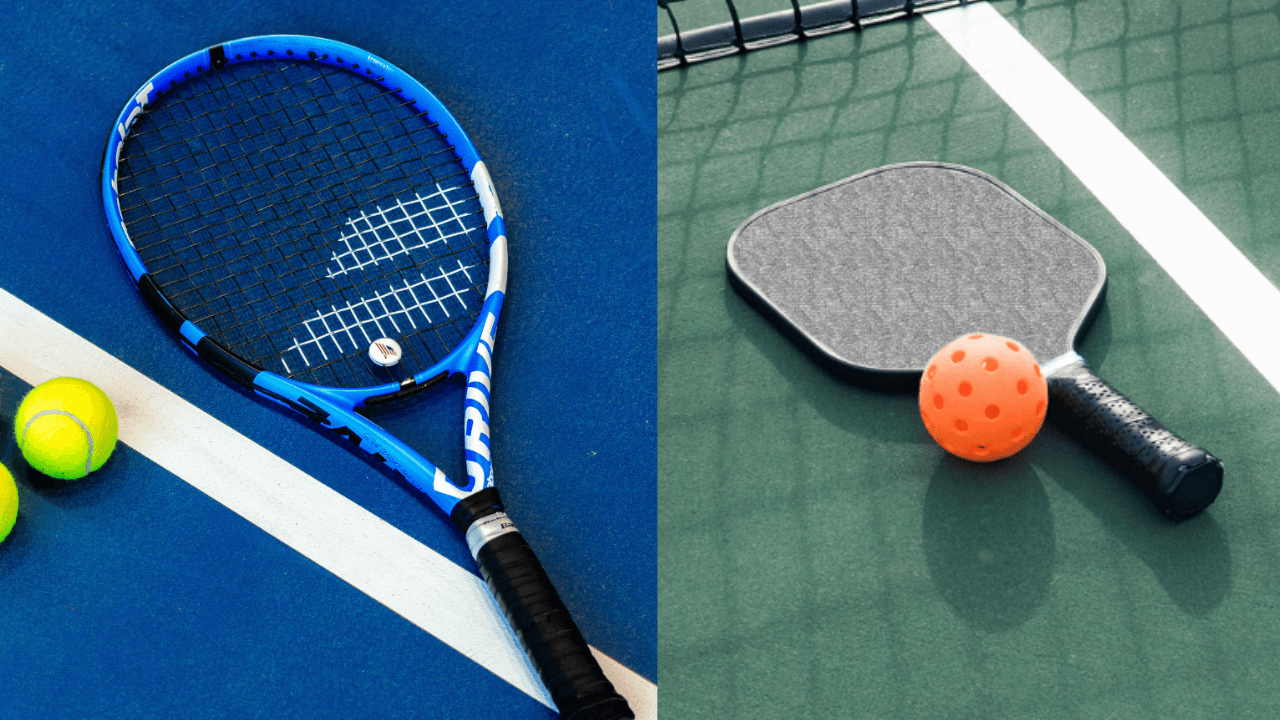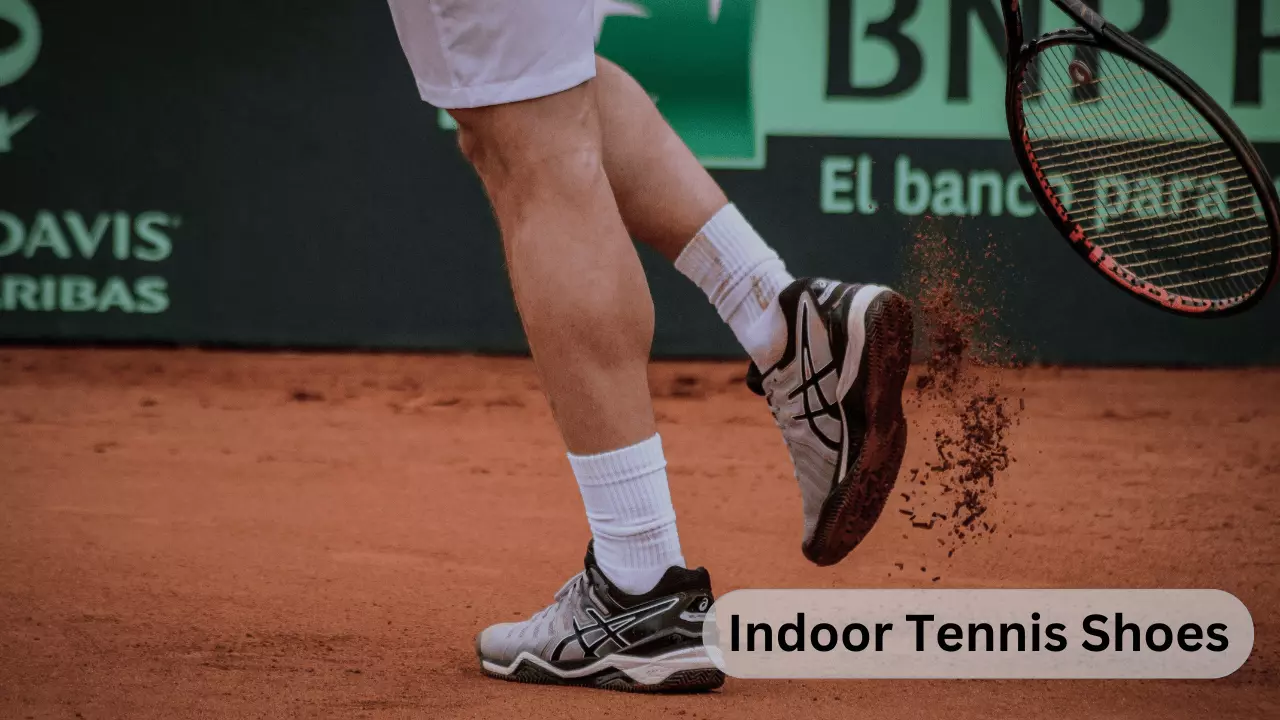Pickleball vs Tennis, both beloved racket sports, offer unique experiences on the court. While tennis boasts a rich history and a prestigious reputation, pickleball, a relatively newer sport, has been gaining rapid popularity for its accessibility and fast-paced gameplay. In pickleball, players utilize a smaller court, paddle, and perforated ball, promoting quick reflexes and strategic shot placement. On the other hand, tennis is renowned for its powerful serves, elegant volleys, and lengthy rallies on a larger court. Each sport has its own set of rules, techniques, and community, catering to a diverse range of players with varying skill levels and preferences.
How do pickleball and tennis scoring contrast?
When comparing Pickleball vs Tennis, one noticeable distinction lies in their scoring systems. In Pickleball, scoring follows a rally-based system, where only the serving team can score points. Each successful rally earns a point, and games are typically played to 11 points, with a two-point winning margin.
However, in Tennis, scoring is more complex, with a combination of points, games, and sets determining the winner. Points progress from 15, 30, and 40, with the leading player needing to win by two points to secure a game. Matches usually consist of best-of-three or best-of-five sets, with each set potentially lasting longer than a Pickleball game.
This difference in scoring can significantly affect gameplay dynamics. In Pickleball, the shorter rallies and smaller court size make every point crucial, leading to intense and fast-paced exchanges. Conversely, Tennis matches often involve longer rallies and strategic point construction due to the larger court and scoring system, adding a layer of complexity to each match.
Furthermore, the scoring systems reflect the sports’ origins and evolution. Pickleball, a relatively new sport, prioritizes simplicity and accessibility, making it easy for beginners to grasp the scoring quickly. In contrast, Tennis, with its rich history dating back centuries, has developed a scoring system that rewards endurance, skill, and mental fortitude throughout a match.
Ultimately, whether you’re drawn to the quick thrill of Pickleball’s rally-based scoring or the strategic depth of Tennis’s point, game, and set structure, both sports offer unique challenges and exhilarating gameplay experiences.
What are the key differences between pickleball and tennis?
When comparing Pickleball vs Tennis, several key differences distinguish these two racket sports.
Court Size: Pickleball is played on a smaller court, typically about one-third the size of a tennis court, making it easier to cover ground and facilitating quicker gameplay. In contrast, tennis is played on a larger court, requiring more endurance and strategic positioning.
Equipment:
- Pickleball utilizes paddles made of wood, composite materials, or graphite, along with a lightweight perforated plastic ball. Tennis, on the other hand, employs rackets made of graphite or other materials, paired with a rubber ball covered in felt.
Scoring System:
- Pickleball features a rally-based scoring system, where only the serving team can score points. Games are typically played to 11 points, with a two-point winning margin. Tennis employs a more complex scoring system based on points, games, and sets, with matches often consisting of best-of-three or best-of-five sets.
Serving Technique:
- In Pickleball, serves must be made underhand and hit below the waist, promoting control and accuracy. Tennis allows for overhand serves, enabling players to generate more power and spin.
Movement and Footwork:
- Due to the smaller court size in Pickleball, players engage in quicker lateral movements and shorter rallies compared to the longer rallies and more extensive court coverage required in tennis.
Pace of Play:
- Pickleball generally features a faster pace of play with shorter rallies and quicker exchanges, while tennis tends to have longer rallies and more strategic point construction.
Understanding these key differences can help players appreciate the unique challenges and nuances offered by each sport, catering to a diverse range of preferences and playing styles.
Do pickleball and tennis tournaments vary widely?
When comparing Pickleball vs Tennis tournaments, it’s evident that while both sports host competitive events, there are notable differences in their formats and organization.
1. Tournament Size and Scale
Tennis tournaments often range from local club events to prestigious Grand Slam tournaments like Wimbledon or the US Open, which attract top-ranked players from around the world. In contrast, Pickleball tournaments can vary widely in size and scale, from small local competitions to larger regional or national events, reflecting the sport’s growing popularity.
2. Participant Demographics
Tennis tournaments traditionally cater to a wide range of age groups and skill levels, with separate categories for juniors, adults, and seniors. Pickleball tournaments similarly accommodate diverse demographics, but the sport’s accessibility and appeal to older adults have led to a significant presence of seniors in many competitions.
3. Tournament Format
Tennis tournaments typically follow a single-elimination or double-elimination format, with matches consisting of best-of-three or best-of-five sets. Pickleball tournaments may adopt similar formats but often feature round-robin formats or modified scoring systems to accommodate a larger number of participants and ensure ample playing opportunities for all skill levels.
4. Venue and Facilities
Tennis tournaments are commonly held at dedicated tennis facilities with multiple courts, amenities, and spectator seating. Pickleball tournaments may take place at similar facilities or adapt existing venues such as gymnasiums or outdoor courts to accommodate the smaller court size and unique requirements of the sport.
5. Prize Money and Recognition
While top-tier tennis tournaments offer substantial prize money and global recognition, Pickleball tournaments may offer more modest prizes and garner varying levels of media coverage and sponsorship support, reflecting the sport’s evolving status within the athletic community.
6. Tournament Atmosphere
Tennis tournaments often have a vibrant atmosphere, with enthusiastic crowds, entertainment, and sponsor activations enhancing the spectator experience. Pickleball tournaments also feature a lively atmosphere, but the ambiance may differ due to the sport’s distinct culture and community.
Overall, while both Pickleball vs Tennis tournaments provide opportunities for competition, camaraderie, and skill development, the differences in scale, format, and participant demographics contribute to unique tournament experiences in each sport.
Are the rules of pickleball and tennis similar?
If comparing Pickleball vs Tennis, it’s evident that while both sports share some similarities, their rules also exhibit distinct differences.
1. Court Dimensions
Pickleball vs Tennis courts differ in size. A pickleball court measures 20 feet wide and 44 feet long for doubles and 34 feet long for singles, while a tennis court is larger, measuring 27 feet wide for singles and 36 feet for doubles, with lengths of 78 feet.
2. Serving Technique
In pickleball, serves must be made underhand, below the waist, and diagonally cross-court. In tennis, serves can be made overhand or underhand, allowing for more variety in serving techniques.
3. Scoring System
Pickleball uses a rally-based scoring system, where only the serving team can score points, and games are typically played to 11 points. Tennis employs a more complex scoring system, with points progressing from 15, 30, and 40, and games requiring a two-point winning margin.
4. Equipment
While both sports use rackets/paddles and balls, there are differences in their specifications. Pickleball paddles are smaller and lighter, typically made of wood, composite materials, or graphite, and the ball is plastic with perforations. Tennis rackets are larger and heavier, made of graphite or other materials, and the ball is rubber-covered in felt.
5. Double Bounce Rule
In pickleball, after the serve, each team must allow the ball to bounce once on their side before volleying. This rule encourages longer rallies and strategic play. Tennis does not have a double bounce rule after the serve.
6. Court Lines and Zones
While both sports have similar court lines demarcating boundaries, pickleball courts feature distinct non-volley zones (kitchen), which restrict players from volleying within a certain area near the net. Tennis courts lack this specific zone restriction.
Overall, while Pickleball vs Tennis share some fundamental rules related to scoring and gameplay, their differences in court dimensions, serving techniques, scoring systems, equipment specifications, and specific rules make each sport unique and offer players varied experiences on the court.
Can you play pickleball if you have tennis elbow?
When comparing Pickleball vs Tennis, individuals with tennis elbow may find pickleball to be a more suitable option due to its less demanding nature on the elbow joint. Pickleball involves shorter rallies, softer balls, and less forceful movements compared to tennis, potentially reducing strain on the elbow.
However, it’s essential to consult with a healthcare professional before playing any sport with a pre-existing condition like tennis elbow to determine the appropriateness and to receive personalized recommendations for managing and preventing further injury. Additionally, modifying techniques, using proper equipment, and incorporating appropriate warm-up and cool-down routines can help mitigate the risk of exacerbating tennis elbow symptoms during pickleball play.
Overall, while pickleball may be gentler on the elbow compared to tennis, individual experiences with tennis elbow can vary, and it’s crucial to prioritize safety and injury prevention when engaging in any physical activity.
References:
- “Pickleball vs Tennis: Which is Better for Seniors?” by Richard J. Schmidt, et al. (2020), Journal of Aging and Physical Activity.
- “Effects of Pickleball Play on Physical Health and Function in Older Adults” by Elizabeth C. Schroeder, et al. (2021), International Journal of Environmental Research and Public Health.
- “Management of Tennis Elbow: A Review of the Current Evidence” by Leila Ledbetter, et al. (2020), American Family Physician.
Which sport is better for beginners, pickleball, or tennis?
The comparing Pickleball vs Tennis for beginners, several factors can influence which sport may be more suitable.
1. Learning Curve
Pickleball generally has a shorter learning curve compared to tennis, making it more accessible for beginners. The smaller court size, simplified rules, and slower-paced gameplay allow beginners to grasp the fundamentals more quickly and experience success sooner.
2. Physical Demands
Pickleball is generally less physically demanding than tennis, requiring less running and exertion due to the smaller court size and slower ball speed. This can make pickleball a more comfortable starting point for beginners who may not yet have developed high levels of fitness or endurance.
3. Injury Risk
Pickleball typically poses a lower risk of injury for beginners compared to tennis. The softer pickleball and shorter rallies reduce the strain on joints and muscles, potentially lowering the likelihood of overuse injuries, such as tennis elbow or shoulder injuries, commonly associated with tennis.
4. Social Aspect
Both pickleball and tennis offer opportunities for social interaction and community engagement. However, pickleball’s smaller court size and doubles-focused gameplay can foster a more collaborative and social atmosphere, making it an attractive option for beginners seeking a supportive and friendly environment.
5. Community and Support
Pickleball has a welcoming and inclusive community that often provides support and guidance to beginners. Many pickleball clubs and facilities offer lessons, clinics, and social events specifically tailored to newcomers, helping them feel comfortable and confident as they learn the sport.
6. Skill Development
While pickleball may be easier to pick up initially, tennis offers a broader range of skills and techniques to master over time. Beginners in tennis may find the challenge of learning various strokes, footwork patterns, and strategies rewarding as they progress in the sport.
Ultimately, the decision between Pickleball vs Tennis for beginners depends on individual preferences, goals, and physical abilities. Some beginners may prefer the simplicity and social aspects of pickleball, while others may be drawn to the athleticism and complexity of tennis. Regardless of the choice, both sports offer enjoyable and fulfilling experiences for beginners seeking to improve their fitness, coordination, and overall well-being.
Final Thought:
Pickleball vs Tennis racket sports, the clash between pickleball and tennis unveils a tapestry of diversity, each thread weaving its narrative of competition, camaraderie, and skill. As players traverse the courts, whether with a paddle or a racket in hand, they embark on a journey shaped by nuanced strategies, lightning-fast reflexes, and unwavering passion. Pickleball’s rise to prominence alongside tennis signifies a shift in the sporting landscape, heralding inclusivity and innovation. Yet, amidst their differences, both sports share the timeless allure of challenging oneself, forging connections, and experiencing the unparalleled thrill of the game, beckoning enthusiasts to embrace the joy of play.




